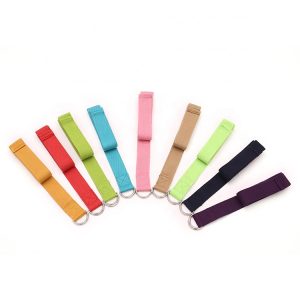Eco-friendly yoga mats are designed with sustainability and reduced environmental impact in mind. The science behind these mats involves the careful selection of materials and manufacturing processes that aim to minimize harm to the environment. Here are some key aspects of the science behind eco-friendly yoga mats:
- Material Selection: The primary focus of eco-friendly yoga mats is to use materials that are biodegradable, recyclable, renewable, or derived from sustainable sources. Common materials include natural rubber, cork, jute, organic cotton, and TPE (Thermoplastic Elastomer).
- Biodegradability: Many eco-friendly yoga mats are biodegradable, which means they can naturally break down and return to the earth without causing long-term pollution or harm to the ecosystem. This contrasts with conventional PVC mats, which take hundreds of years to decompose.
- Toxin-Free Formulations: Eco-friendly mats avoid the use of harmful chemicals, such as phthalates, lead, and PVC. Instead, they use non-toxic materials and environmentally friendly manufacturing processes.
- Sustainable Manufacturing: The science behind eco-friendly mats involves adopting sustainable manufacturing practices that reduce energy consumption, greenhouse gas emissions, and waste generation. This may include energy-efficient processes, recycling water, and minimizing the use of harmful chemicals.
- Carbon Footprint: Eco-friendly mats often have a smaller carbon footprint compared to traditional mats made from petroleum-based materials. This means they contribute less to overall greenhouse gas emissions.
- Eco Labels and Certifications: Many eco-friendly yoga mats carry eco labels and certifications, such as OEKO-TEX, GOTS (Global Organic Textile Standard), and USDA Organic, which verify their environmentally friendly attributes.
- Recycled Materials: Some eco-friendly mats incorporate recycled materials, such as recycled rubber or plastic bottles, to reduce waste and promote resource reuse.
- Eco-Friendly Packaging: The science behind eco-friendly mats also extends to the packaging. Sustainable mats are often packaged using minimal or biodegradable materials to further reduce environmental impact.
- Durability and Longevity: Eco-friendly mats are designed to be durable and long-lasting, reducing the need for frequent replacements and minimizing waste.
By embracing these scientific principles, eco-friendly yoga mats aim to provide practitioners with a sustainable and ethical choice that aligns with their commitment to environmental preservation. Choosing an eco-friendly yoga mat can contribute to a healthier planet while supporting sustainable practices in the yoga industry.








